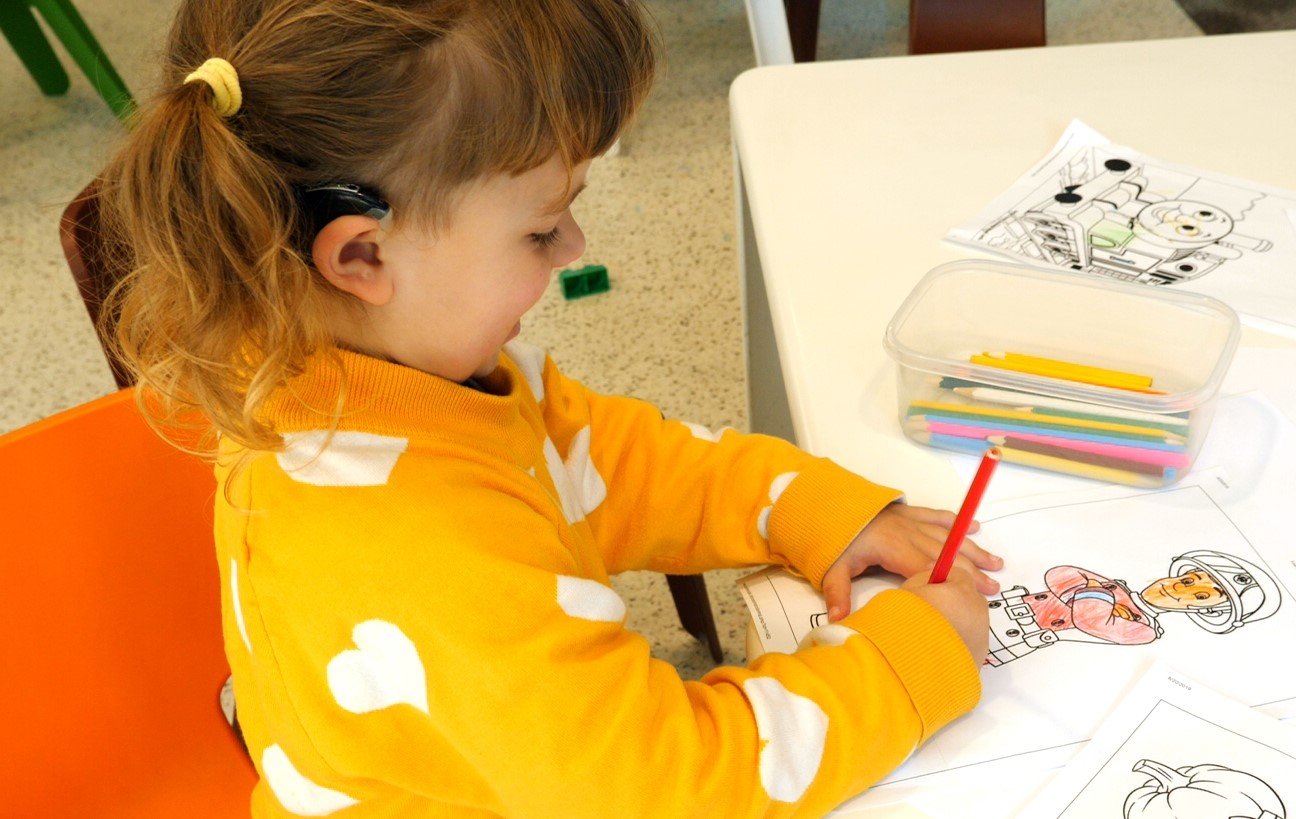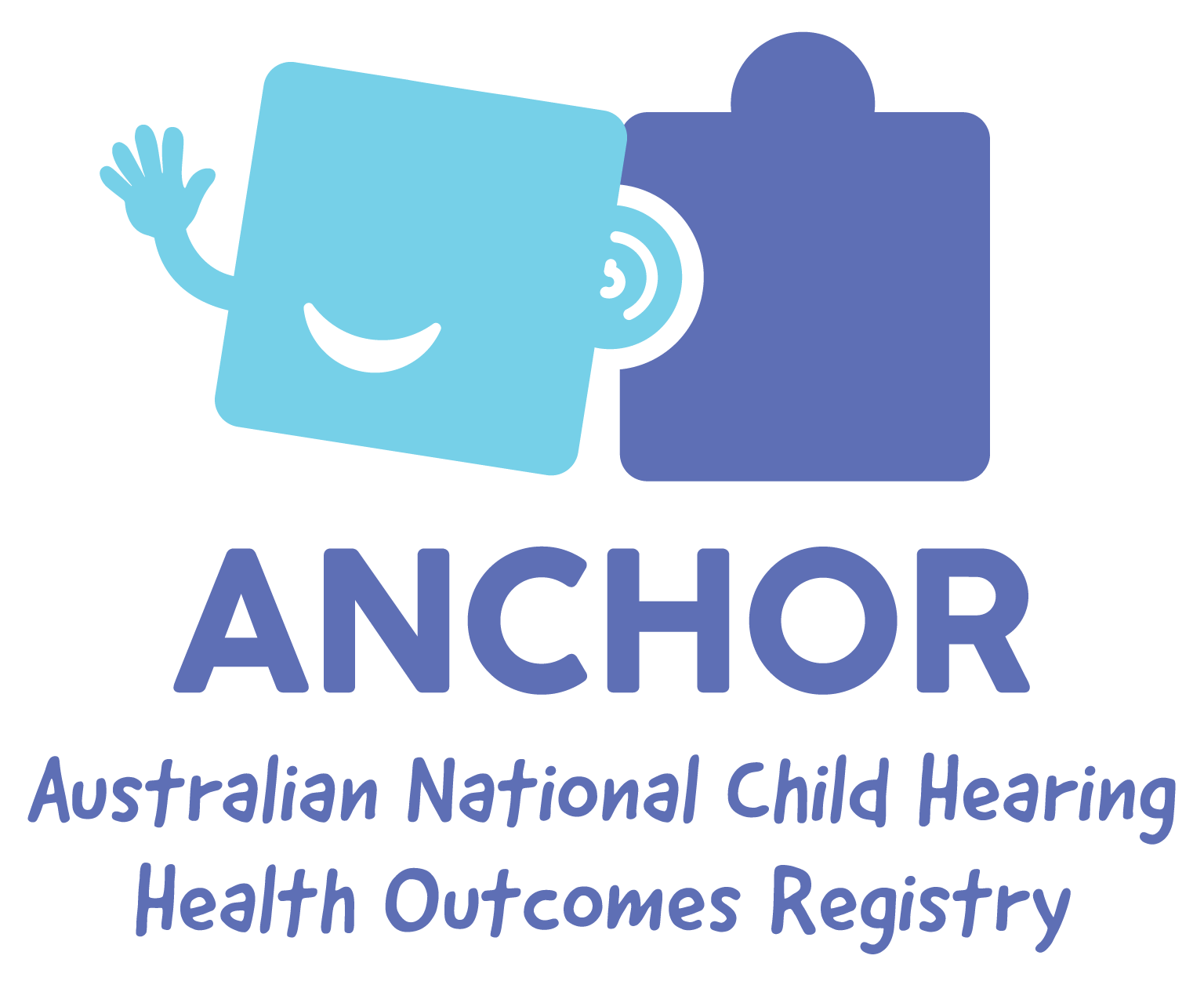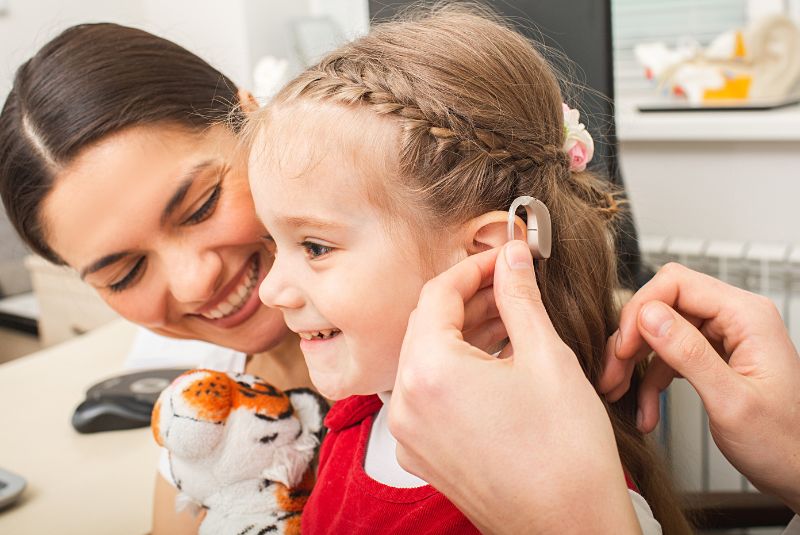ANCHOR: Australian National Child Hearing Health Outcomes Registry
- Project status: Active
Research area: The Centre for Community Child Health > Prevention Innovation

Australian National Child Hearing Health Outcomes Registry
Building on newborn hearing screening success: towards national standards & data management.
Photograph taken by Kieren Topp.

Building on newborn hearing screening success: towards national standards & data management.
Photograph taken by Kieren Topp.

Building on newborn hearing screening success: towards national standards & data management.
Photograph taken by Kieren Topp.

Overview
Australian children who are born deaf or hard of hearing (DHH) are some of the best supported in the world. This is made possible through established universal newborn hearing screening (UNHS), diagnosis, device provision, early intervention and medical services.
However, there is no mechanism to measure progress and track outcomes on an individual or population level, nor is there a system to document hearing health needs for children. There is an urgent need to systematically capture data to:
- Ensure the government’s current investments into UNHS and child hearing health interventions are improving outcomes.
- Address inequity in service access, particularly Aboriginal and Torres Strait Islander and vulnerable children, to ensure no deaf or hard of hearing (DHH) child slips through the cracks.
- Track outcomes of ad hoc postnatal screening, responding to the World Health Organization’s recent recommendations.
This grant aims to develop the prerequisites for a database for DHH children aged zero to 18 years, including Aboriginal and Torres Strait Islander and children from culturally and linguistically diverse (CALD) backgrounds in Victoria and Queensland, as a prototype that can be rolled out nationally. Its specific aims are to:
- Map Australia’s hearing-specific services and datasets nationally and by state.
- Bring datasets into a single system (Victoria and Queensland), linked to universal administrative datasets.
- Develop a national Core Outcomes Set to measure what matters to Australian children, families, services and funding agencies.
- Evaluate the costs and benefits of developing and maintaining ANCHOR.
- Provide proof-of-concept answers to key research questions.
Key research questions
- Do children with UNHS-detected mild or unilateral hearing losses benefit from amplification or early intervention?
- Should we re-screen for hearing loss later in childhood?
- Can we achieve outcomes equity, especially in Aboriginal and Torres Strait Islander and CALD settings?
- What outcomes matter to Australian children, families, services, and funding agencies?
- Is a whole-population data system possible?
How Australian child hearing health stakeholders can be involved
Volunteer to be a Community Participant
We all want our children to reach their full potential, but what does that mean for families of deaf or hard of hearing children?
Working with families and stakeholders, the ANCHOR team will develop a Core Outcomes Set relevant to Australia. Part of this work will involve talking to DHH communities around the country, including Auslan users, Aboriginal and Torres Strait Islander families and culturally and linguistically diverse families.
We will be seeking further community participation in the second half of 2024. Please check back then for further information and look out for our Outcomes Matter surveys.
Please contact us to join the Interest Group and receive email updates.
Join the Advisory Group
Attend 6-monthly meetings, spread the word, distribute surveys, approach community members and participate in a consensus meeting on the development of a national Core Outcomes Set. Meetings will be held via Zoom, with Auslan interpreters and live captions.
The consensus meeting will be held in Melbourne, Victoria in 2024.
Register your interest in the Advisory Group via the ANCHOR Participation Survey below.
Join a Working Group
As well as being part of the Advisory Group, Working Group members will meet regularly for short periods to assist us with addressing specific aims and may help with design/methodology and contribute to publications.
To express an interest in being part of a Working Group, please complete the ANCHOR Participation Survey.
Australian Childhood Deafness Research – Community Advisory Group (AusChildDeafness-CAG)
Together with families, we have established an Australian Research for Childhood Deafness – Community Advisory Group (ARCD-CAG), the first of its kind in Australia.
The aim of this group is to strengthen partnerships between families and researchers working in childhood deafness around Australia and ensure the voices of those with lived experience are being valued and heard.
Read more about the AusChildDeafness-CAG.
Research team
Team leader - Prevention Innovation
This work is funded by the National Health and Medical Research Council (NHMRC) – Targeted Call for Research into Hearing Health 2021: Evidence-based support services “Building on newborn hearing screening success: towards national standards & data management”.
Contact us
ANCHOR Study
Murdoch Children's Research Institute
The Royal Children's Hospital
50 Flemington Road
Parkville VIC 3052
Australia
Associate Professor Valerie Sung
Team Leader/Clinician-Scientist Fellow
Phone: show phone number
Email:
show email address











